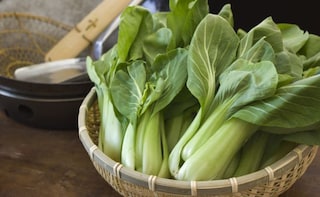There are people who will tell you how they get home tired after a long day of work and then cook a reasonably elaborate meal for themselves. There are also those I have met, who live alone but insist that they plate up every meal Masterchef Australia style, regardless of the lateness of the hour or dipping energy levels. The best people are those, however, who confess candidly that they do nothing of the kind, giving no one a complex! The best evening meal, the only that I am inclined to rustle up post a working day, is a stir fry. Though often regarded as a winter exercise, stir frys are great any time of the year: nutritious, quick and with the potential to be as imaginative as your veggies and bits of meats, sauces and seasoning permit.
Of the ingredients to stir fry—virtually anything can be, including all the lovely local greens available in different parts of the country. But having grown up with a fascination for Chinese (and Indian-Chinese), one of my all-time favourites is the pok choy, or bok choy as it is alternatively called.A type of Chinese cabbage, that doesn’t form a head, this is a mildly sweet green (with a creamy whiteness!). What makes it such a star though is the texture—the crispness, that usually gets retained unless you botch up the stir fry completely. No one should cut up bok choy (though I have heard of that); just separate the stems, wash, pat dry and lightly cook. You can add an array of condiments to flavour this one up—from salty soy to sweetish miso, to a creamier almond sauce, and it all works quite well. In fact, the pok choy can be the perfect side dish to a meatier meal too—especially saltier meats that get contrasted quite well with its sweetish flavour..
Like all other cabbages, this one is ideal for those going on a diet. More than 90 per cent of it is water, there’s just 2 per cent carbs and 1 per cent fat. What you have instead is fibre, as well as those micro-nutrients like vitamin A, C and K, folate and even moderate amounts of calcium. So it is quite a nutrient rich food overall.In fact, Chinese medicine has used it traditionally in various cures. It was regarded as having cooling properties and thus used to treat stomach ailmets and fevers. Because of the vitamin C perhaps, it was also used to cure colds.
Of the ingredients to stir fry—virtually anything can be, including all the lovely local greens available in different parts of the country. But having grown up with a fascination for Chinese (and Indian-Chinese), one of my all-time favourites is the pok choy, or bok choy as it is alternatively called.A type of Chinese cabbage, that doesn’t form a head, this is a mildly sweet green (with a creamy whiteness!). What makes it such a star though is the texture—the crispness, that usually gets retained unless you botch up the stir fry completely. No one should cut up bok choy (though I have heard of that); just separate the stems, wash, pat dry and lightly cook. You can add an array of condiments to flavour this one up—from salty soy to sweetish miso, to a creamier almond sauce, and it all works quite well. In fact, the pok choy can be the perfect side dish to a meatier meal too—especially saltier meats that get contrasted quite well with its sweetish flavour..
Like all other cabbages, this one is ideal for those going on a diet. More than 90 per cent of it is water, there’s just 2 per cent carbs and 1 per cent fat. What you have instead is fibre, as well as those micro-nutrients like vitamin A, C and K, folate and even moderate amounts of calcium. So it is quite a nutrient rich food overall.In fact, Chinese medicine has used it traditionally in various cures. It was regarded as having cooling properties and thus used to treat stomach ailmets and fevers. Because of the vitamin C perhaps, it was also used to cure colds.
Advertisement
Advertisement
For the latest food news, health tips and recipes, like us on Facebook or follow us on Twitter and YouTube.
Advertisement
